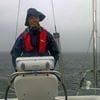Explore all the information on
Sow feeding management
An essential part of any strategy to optimize sow reproductive performance, increase efficiency of feed usage and lower culling rate, is to control weight and backfat gain during gestation and weight and backfat loss in lactation. This is best achieved by individually feeding each sow a well balanced diet, and basing daily feed allowances according to an estimate of sow bodyweight and backfat thickness.
A well-designed feeding program can help meet operational goals for sow farm efficiency and profit by minimizing feed waste and maximizing sow productivity. An effective sow feeding program starts with breeding gilts within the right window of weight and feeding them according to recommendations during their first gestation. This can help maximize the number of sows in ideal condition at first farrowing.
Additionally, knowing and maintaining an ideal sow body condition score is a key strategic area for long-term success. The body condition of sows in the barn is closely related to the profitability of the sow farm because it impacts sow longevity and reproductive performance. Keeping sows in the ideal body condition – not too fat and not too thin – is essential. A successful feeding program includes recording data and linking body condition to feeding so you can correctly adjust each sow’s feed ration.
...
Comments : 3
Recommendations: 1
Potassium diformate (KDF) is a specifically conjugated acid double-salt (HCOOH HCOOK), patented by ADDCON and traded as FORMI on the European and world-markets. Potassium diformate has been approved in the European Union as a non-antibiotic growth promoter for use in diets for piglets, growing-finishing pigs and in sows. It was also registered as the first replacement for in-feed antibiotics world-wide. This article series describes the effects of KDF fed to sows...
Comments : 0
Recommendations: 2
.jpg&w=3840&q=75)

Achieving Successful Protein Reduction: Possibility or Wishful Thinking?
Suggested link
Introduction Lactogenesis is induced hormonally by a dramatic drop of progesterone (P4) concentrations which leads to a pre-partum peak of prolactin (PRL). In sows, impaired production of colostrum has been found to be related to a delay in the decrease of P4 concentrations during the pre-partum period. We assumed that this condition might affect also the quality of colostrum (IgG concentration). Our aim was to investigate the relationship between abnormally high P4 levels...
Comments : 2
Recommendations: 1
Introduction. Variation in live weight in growing pigs causes a number of problems for producers and results in significant economic loss. However, it is important to bear in mind that biological variation exists for a reason. It is the foundation of natural and artificial selection and as such is the basis for genetic improvement in performance traits. In addition, even if we could minimize all of the genetic and environmental causes of such...
Comments : 0
Recommendations: 0
Abstract Probiotics are considered to have the beneficial effect on maintaining intestinal ecosystem, enhancement mucosal barrier functions, and improving livestock performance. Muco-defen (Life Rainbow Biotech Co., Ltd. Taiwan) is the product composed of selected Bacillus strains via patent solid-state fermentation process to ensure the 2nd metabolites production, and formulated with essential oil, that can prevent colonization of pathogens by...
Comments : 0
Recommendations: 1
Introduction The increase in litter size over recent decades has reduced the uterine space available for fetal growth and development, thus reducing individual piglet birth weight. Consequently, lower birth weight reduces piglet survivability, wean weight, and market weight. However, few nutritional options have been identified to mitigate reduced birth weight. There is evidence that increasing feed intake in late gestation improves piglet birth weight (Cromwell et al.,...
Comments : 0
Recommendations: 0
Kurt Wegleitner, Managing Director for Addcon, talks about Performance 2017. “Managing hyperprolific sows in Asia” was the motto of the Performance 2017 which took place on March 14th before VIV Asia 2017....
Comments : 0
Recommendations: 0
Dr. Thomas Crenshaw, from the University of Wisconsin, gave a lecture on the importance of vitamin D in the nutrition of the sow and the maternal carry-over effects, during CLANA 2016 in Cancun, Mexico....
Comments : 0
Recommendations: 0
Introduction Growing pigs produce tremendous amounts of heat (Brown-Brandl, et al. 2004) and when raised in confinement facilities this heat must be removed by the barn's environmental control system (Brumm, 2012). Standard barn ventilation systems that use ambient or outside air to remove this heat has only limited capacity to control rising barn temperaturesduring warm and hot weather. For this reason, numerous studies and papers have been...
Comments : 1
Recommendations: 0
Introduction: Potassium diformate, a double-salt of formic acid, has been shown in numerous trials to improve health and performance in piglets, growing-finishing pigs and sows. Thus, potassium diformate (KDF) has been approved in the European Union as the first non-antibiotic growth promoter for use in swine. The effect of KDF is often described as strong antimicrobial and digestibility enhancing. However, data on its use in sows under tropical conditions...
Comments : 5
Recommendations: 0
Introduction: Dietary potassium diformate (KDF) has been widely applied in pig production for almost 20 years and has been reported in numerous publications and conference contributions, for its use in sows, piglets and fatteners. It was the first organic acid salt to be approved as a non-antibiotic growth promoter in pig feed in the European Union, where it has been shown to improve growth performance and feed efficiency in pig production in several...
Comments : 0
Recommendations: 0
For many decades the focus for sow farmers has been on increasing the number of total weaned piglets per sow per year. This number has been steadily rising, with more and more farmers now reaching the impressive number of 35 piglets weaned per sow per year. However, society has become more concerned about animal welfare, increasing the pressure on farmers to house gestating sows in groups, reduce lameness in sows and improve the vitality of piglets. Live weight of newborn piglets has been...
Comments : 1
Recommendations: 0
.jpg&w=3840&q=75)

Achieving Successful Protein Reduction: Possibility or Wishful Thinking?
Suggested link
David Saornil speaks about the importance of sows feed intake during lactation and factors influencing it, and the influence of litters in sows lactation and piglets mortality. He also speaks about the genetic evolution on sows and piglets too....
Comments : 0
Recommendations: 0
Sung Woo Kim speaks about the nutritional aspect that influence the reproductive system of sows. He also speaks about the high lactation capacity milk production that has increase and the growth of fetuses and mammary glands....
Comments : 0
Recommendations: 0
Ferdinand Entenfellner speaks about animal walfare regulations and the increasing of the restrictions related to management and farming. He also talks about the influence of the economic and enviromental situation....
Comments : 0
Recommendations: 0
Potassium diformate has been shown in numerous trials to improve health and performance in piglets, growing-finishing pigs and sows. It is furthermore the only zootechnical additive with EU-approval for use throughout the whole pig production chain. The effects of potassium diformate (KDF) are often described as strong antimicrobial and digestibility enhancing. Most of the data available on the use of KDF in sows are from trials performed at universities and...
Comments : 9
Recommendations: 0
Clement Soulet, Product manager for palatants in Pancosma talks about the benefits of using palatant products to increase feed intake and how recent studies have proven that SUCRAM® not only targets lingual epithelium, but also the gut epithelium....
Comments : 0
Recommendations: 0
Commercial production actually moved away from group housing to sow stalls to improve sow welfare and ensure that sows could be given individual treatment. For the past 30 years the Australian pig industry has investigated sow housing, with increasing emphasis on the welfare of sows in stalls. In 2010 the Australian pork industry, in a landmark decision for an agricultural industry, agreed to voluntarily phase out gestation...
Comments : 0
Recommendations: 0
Introduction The industry definition of "Gestation Stall Free" was that sows and gilts should be kept in loose housing systems from five days after service until one week before farrowing. Associated with this voluntary phase out of sow stalls by industry has been increased emphasis on stall free gestation housing systems by the major retailers. Consequently, the Australian pork industry's move away from the use of sow...
Comments : 0
Recommendations: 0
























